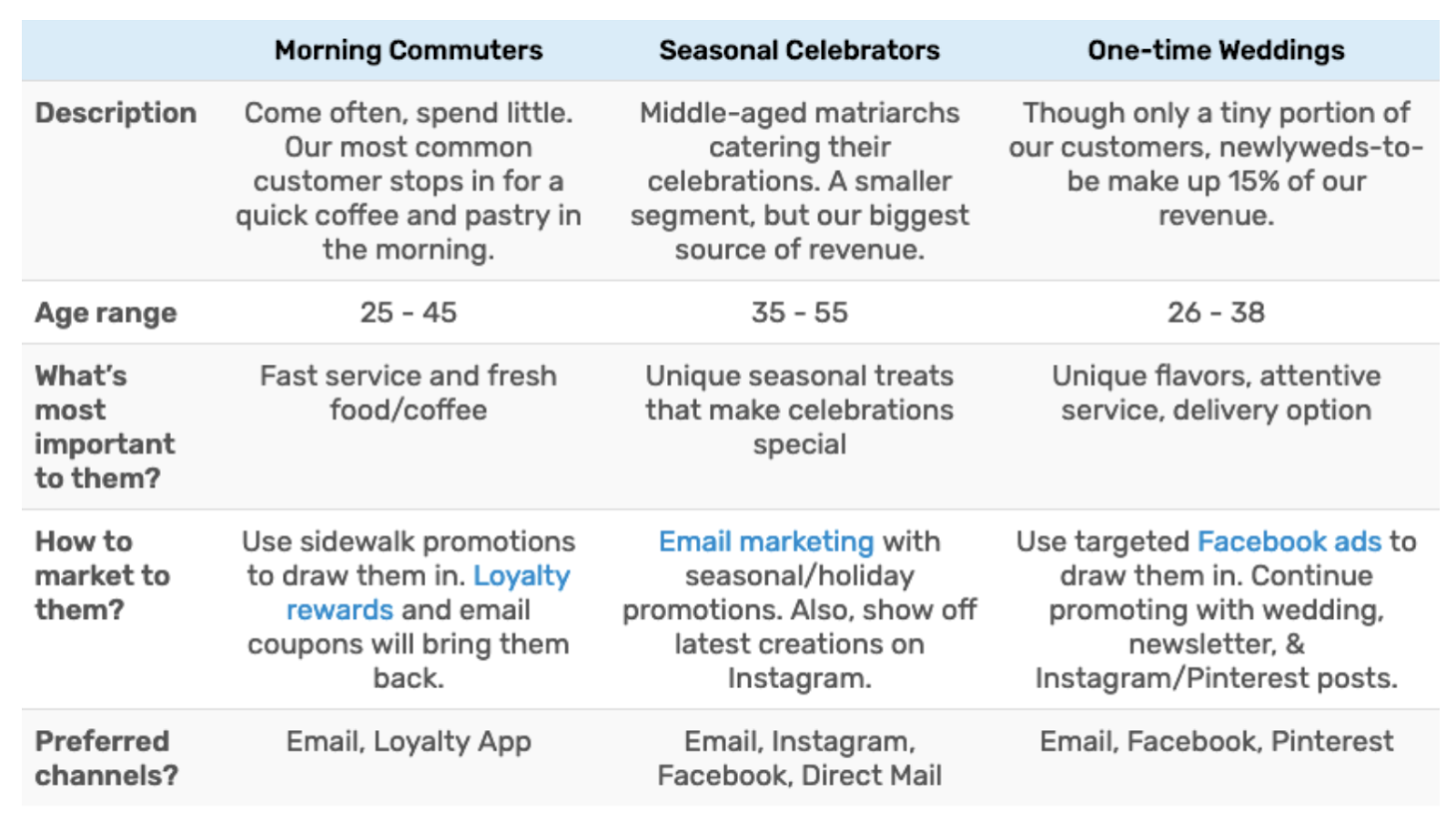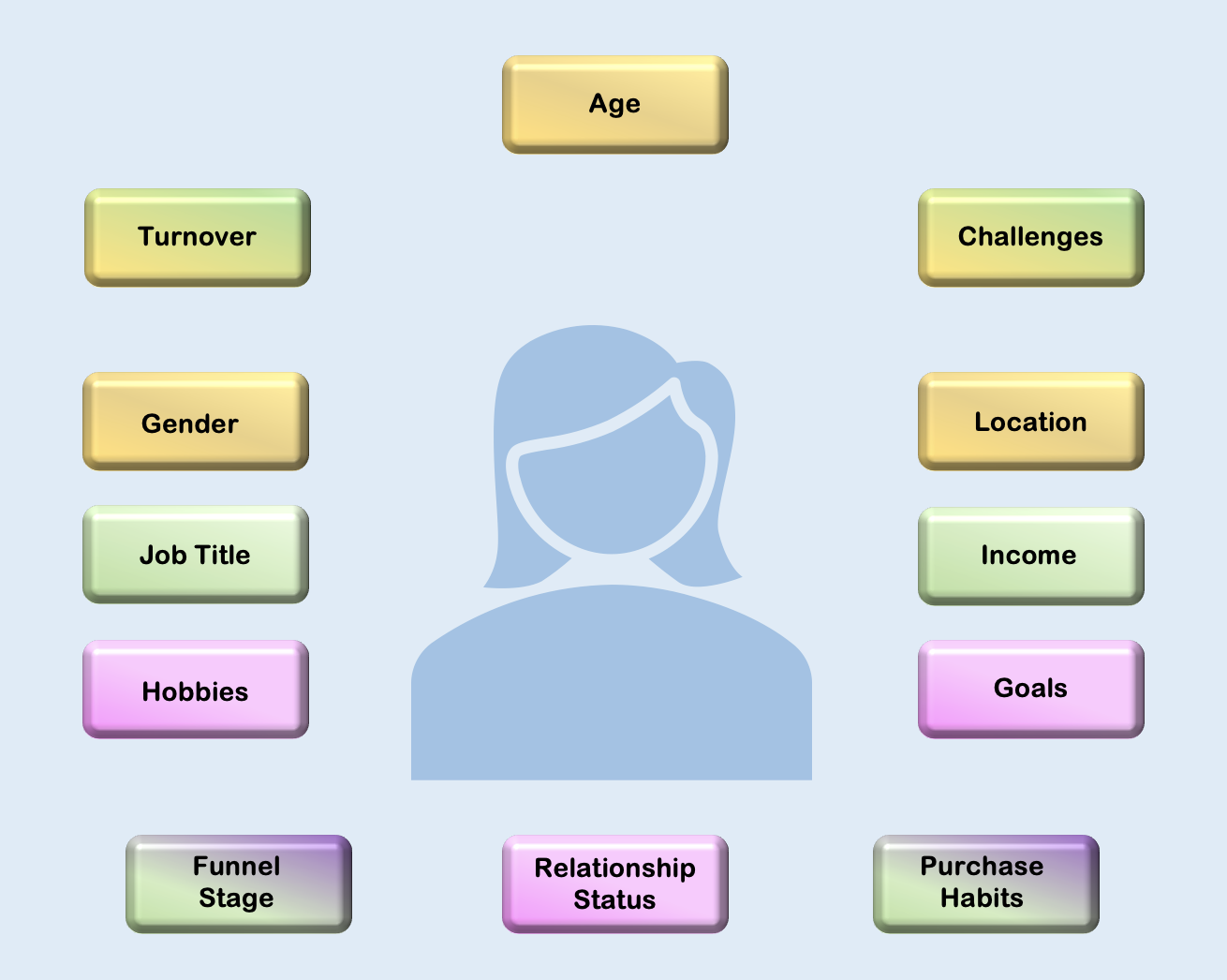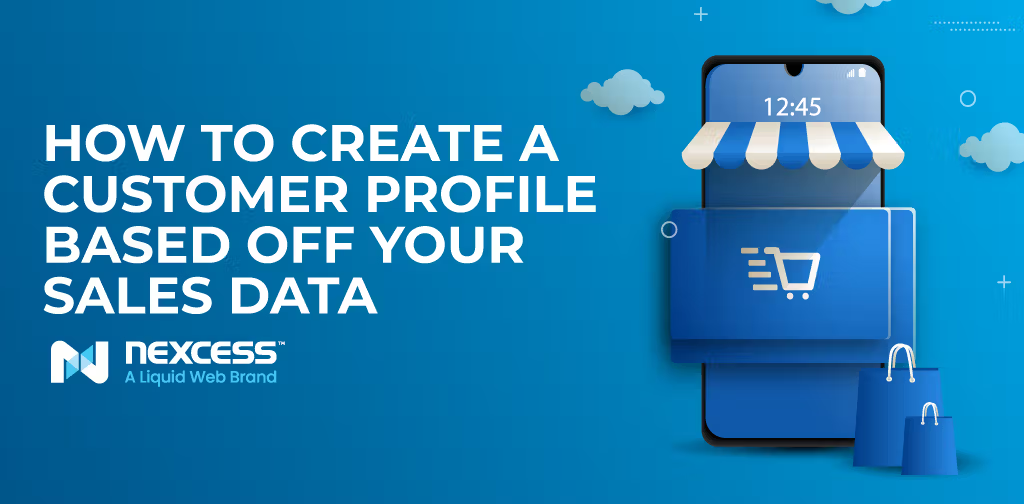Great products can sell themselves. In order to get them sold, they need to be marketed to the right customers. It can be difficult even for seasoned professionals to figure out who their target customer is — but it all starts with good data.
Knowing what your customers want to buy is important — but there’s a lot more to understanding who you’re selling to. Learning about your customers’ demographics and other characteristics can give you insight into how your products can benefit them.
Thinking about this data helps generate a customer profile. Developing a customer profile can help you market products more effectively and to the right audience.
Let’s talk about what a customer profile is, how to create a customer profile, and how to use customer profiling to your benefit.
What Is a Customer Profile?
A customer profile is a document that results from collecting data on customers and using it to conceptualize who they are. If you’ve been in the business a while, you may have a good idea of who you’re selling to. If you’re brand new, you likely have an idea of who you want to be selling to.
In the marketing world, companies develop buyer personas to help them segment their targets. They utilize data from focus groups and market research. These highly developed personas are used to “personalize” content and campaigns.
The average ecommerce company doesn’t have easy (or cheap) access to the same type of resources. Instead, it requires constantly evolving as you better understand your customers. It also needs your product knowledge and some creativity.

Image Source: HubSpot
The resulting document should be able to tell a story about your ideal customer because you know who they are, what they like, where they’re viewing ads, and what type of marketing they resonate with.
You essentially put yourself in someone else’s shoes and think about why they would buy your product from you. You don’t have to be in FBI behavioral analysis to understand your customers (though, we won’t lie — that would be pretty awesome).

You do have to put some elbow grease into it. When you develop a customer profile, you’re segmenting the data you have and bringing all the characteristics together to form a “person.”
Customer profiling fills in the details to bring stats and trends to life. You’re answering the question “who is buying my product?” and fleshing out what the data says about their habits, needs, and wants.
Using Customer Profiles & Why They Rock
Once you’ve figured out who you want to target, the next step is to utilize what you’ve learned. What can you do with a customer profile? A lot!
Over a hundred years ago, US retail magnate John Wanamaker asserted that “Half the money I spend on advertising is wasted; the trouble is I don't know which half.” What experts have found is that it may actually be more than that. The culprit? It’s almost definitely marketing to the wrong crowd.
Pumping money into advertising to the wrong targets is one of the biggest mistakes your business can make.
A few years ago, I kept getting constant ads for chicken feed. As someone whose only interaction with chickens is either during dinnertime or in The Legend of Zelda, we can assume that the company advertising to me had gotten some bad lead info.
If the chicken feed company had used a customer profile, they could have selected better groups to target when setting up that ad campaign.
Customer profiles help you refine your targets and stop you from wasting money on advertising to people who do not want your product. They do more than just create a persona for you to “speak to” when you’re marketing to them. They save you money.
What Customer Profiles Can Do For Your Business
Let’s face it. Great marketers have almost superhero-like abilities when it comes to analyzing their customers. Behavior patterns are telling — and it really comes down to science.
Newton’s First Law of Motion states that “an object in motion remains in motion at constant speed and in a straight line unless acted on by an unbalanced force.”Similarly, customers tend to act in the same manner — moving in the same speed and direction — unless they’re interrupted. Focusing on specific archetypes helps your content and marketing approaches feel seamless, making it easier for a deciding customer to make their purchase.
Customers want to feel like they’re not just being sold to. Remember those old Hair Club for Men commercials? “I’m not just the president, I’m also a client.” Showing your clients you see them — and in some cases you are one of them — resonates more.
You can’t personalize your efforts without defining your target customers. Here’s what developing customer profiles can do for your business.
Securing Customer Loyalty and Ambassadors
A customer that can identify with branding messages and the overall feel of their buying experience is a customer that will return. By speaking the language of your customers, you’re establishing brand loyalty. It can cost a business five times more trying to get new leads than it would investing in customer retention.
When you’re showing your customers you’re not just selling to them, but you understand them and are talking to them — you’re creating a bond. Those customers will likely become brand ambassadors, posting to social media about your products and piquing the interest of their peers.
Gaining Better and Consistent Insights
Beefing up your profiling skills can help you get even more data. In a recent study, Salesforce found that 57% of consumers would give businesses their personal data in exchange for personalized offers or discounts. Getting an in-depth understanding of your targets directly from your customers eliminates guesswork!
Looking for ways to ask for data without being intrusive? Try implementing a few questions either in a survey post-sale, creating an incentivized poll for a discount, or generating a quiz to guide customers to personalized recommendations.
Attracting Better Leads
Think about it — have you ever come across an ad on social media that made you wonder “why the heck am I seeing this? How off is their algorithm?” It’s just like that chicken feed ad mentioned above. It’s jarring and can cement the purchase decision before a customer ever clicks on your ad. That won’t happen when you’re showing your ads to the right audience.
Then again, we’ve all seen an ad that makes us stop and go, “Oh wow. I NEED that.” Getting into that sweet spot is possible through customer profiling.
Customer profiling means you can get your ads in front of the people who really, really want chicken feed. It can also help you stop wasting your ad budget (and impressions) on people that do not want your product.
Redefining Sales Goals
Having better data and targeting the right consumers will no doubt impact your sales. As your revenue changes, your previous sales targets will likely need updating. You can increase them if they’re getting higher quickly, or make them more modest as sales normalize.
After several months, you’ll have a better idea of how customer profiles have impacted your sales and can implement new sales goals for your team.
How To Develop A Customer Profile
There are a couple of components needed to build a customer profile: demographic, psychographic, behavioral, and geographic. Before you can create a customer profile, you need data.
If you’re just starting out and don’t have historical data, you can research online and draw your own conclusions as you begin tracking your own data. You can also purchase market research reports if you really want to — but it may not be as relevant as you are hoping.
If you’re a B2C (Business to Consumer) business, you’ll be working with data on individuals. If you’re a B2B (Business to Business) company, you’ll be looking at characteristics of the businesses you’re trying to sell to.
Spend some time researching the demographics you’d like to target. See what the internet says about groups relevant to your business.

Demographic data is information you may be able to gather from order information, cookies, or surveys. It is information like age, gender, and income.
The motivations you attribute to your customer profile are known as psychographics. It is composed of data like lifestyle, values, goals, and other aspects of their personalities. There are many ways to get psychographic data: your existing analytics, organic research, third party research, personal interviews, social media, or the results from surveys you conduct.
Behavioral data isn’t the everyday behavior of your customers. It’s how they behave in the purchase-making setting. These data points are things like customer loyalty, engagement level, customer satisfaction, and purchasing history and volume.
Geographic data, similar in feel to demographics, are the location or region that your customers live in. This is most useful in segmenting down campaigns.
Creating A Customer Profile With Sales Data
Your sales data and analytics also provide valuable insights. In addition to the demographic data you either have or are building upon, the information you collect from your orders can also tell a story.
Look at your sales data, likely collected in your ecommerce store’s dashboard. You should have access to ecommerce KPIs (key performance indicators) such as:
- Total Sales
- Net Sales
- Number of Orders
- Number of Products Sold
- Number of Returns
Depending on what platform you’re using, you may see:
- Top Product(s) Sold
- Top Categories of Items Sold
- Average Order Amount
- Customers Type (New, Repeat)
- When coupons were utilized
Wondering what data like this means for customer profiling? If you examine your order data, you’ll begin to notice trends. Grouping like trends together can help you establish characteristics for your ideal customer.
If you don’t have access to platforms that automate your data for you, you can do it yourself. You can utilize data profiling techniques to gain valuable insights. You’ll also likely need to spend some time interacting with customers and asking them to provide information.
1. Decide What You’re Looking For
Figure out what issues you’re looking to address (if your sales are down, for example). You are creating a profile because you want to improve some aspect of your sales strategy and its results: knowing what you’re looking to improve is the first step.
2. Structure Your Profile
Organization is key to success. It may be helpful to search the internet for templates, or design your own that will better suit your needs. What facets of a profile are most important to you? Not every question or category will be relevant to your particular products. You can make it easy by knowing what is relevant to your base and your end goals alike.
If you don’t want to use a template, map out your idea of the perfect customer. Are they a specific age, employed in a particular industry, or do they like certain hobbies? Create a list of questions or characteristic descriptors.
3. Begin Tracking Better Data
Create a spreadsheet and populate it with your existing customer information. Start building on it. Start surveying customers and ask for feedback. Capture that data.
Get on social media and start searching for keywords that are related to your products. Check out what people are saying about similar products. Take note of characteristics. Combine this knowledge with the information you get from your customers and your order data.
4. Analyze Your Existing Data
Examine the touchpoints with which your customers are interacting with you. What is a strength? Where are you weakest?
Knowing what your repeat customers buy, how frequently, and what they’re spending are all facets of their “purchase habits.” This can help you determine characteristics like whether or not they are loyal customers, driven only by discounts, impulsive buyers, or customers buying only what they need.
When you know what type of customer you’re working with and how often, you can gear your marketing tactics toward them.
5. Transform the Trends You Find Into Persona Facets
Looking at all the data you amassed, start working with your template. Answer the questions or fill in the blanks with the insights you’ve created.
How do you do this? Sort your data! Are you just looking for the number of instances a specific variable occurs? Sort your data into columns and use the “COUNT” function. This is great for figuring out the frequency and volume of orders from repeat customers, for example.
Compare your sales information with answers from your surveys.
How much do your top customers earn? Are they very high or very low income? How does that affect their spending? Is it a luxury product? Is it a basic essential? What does that say about that type of customer?
Do you have lots of customers from a particular city? A particular age group? What do you know about people in that particular segment of customers? If you do not know very much, this is where search engines will be your friend.
Think about why you have either impulse buyers or discount hounds. Social media is great for sourcing psychographics that complement your sales data. Or, you can flat out ask your customers why they bought something. It’s not very different from selecting “business” or “personal” when you book a flight.
6. Name Your Customer
Whether it is a first name (Susan) or descriptive title (urban moms that love reading) — making this customer profile distinct helps you differentiate from other profiles you will develop. You’re going to likely have a couple. Hedging your bets on a single customer type can pigeonhole you and could affect sales. Two or three is a great spot to be in — many more and you’ll lose focus.
Ready To Supercharge Your Sales?
You know how to use sales data to gain insight and develop customer profiles. Now you need a reliable and consistent way of getting your sales data insights.
There are plenty of options for ecommerce, and we know you’ve seen how easy it can be. Easy doesn’t necessarily mean better — especially when your revenue is on the line.
Here’s a hot tip: Nexcess Managed WooCommerce includes Sales Performance Monitor with every plan. It provides valuable insights and alerts you when your trends are shifting.
Understand your sales data faster, and know your customers better. Give your own persona an upgrade and become a Nexcess customer today!
Related Resources
- 9 Sales Performance Metrics To Track Business Growth
- How Sales Data Can Help Every Area of Your Ecommerce Business
- 10 Web Hosting Best Practices for Ecommerce Security

